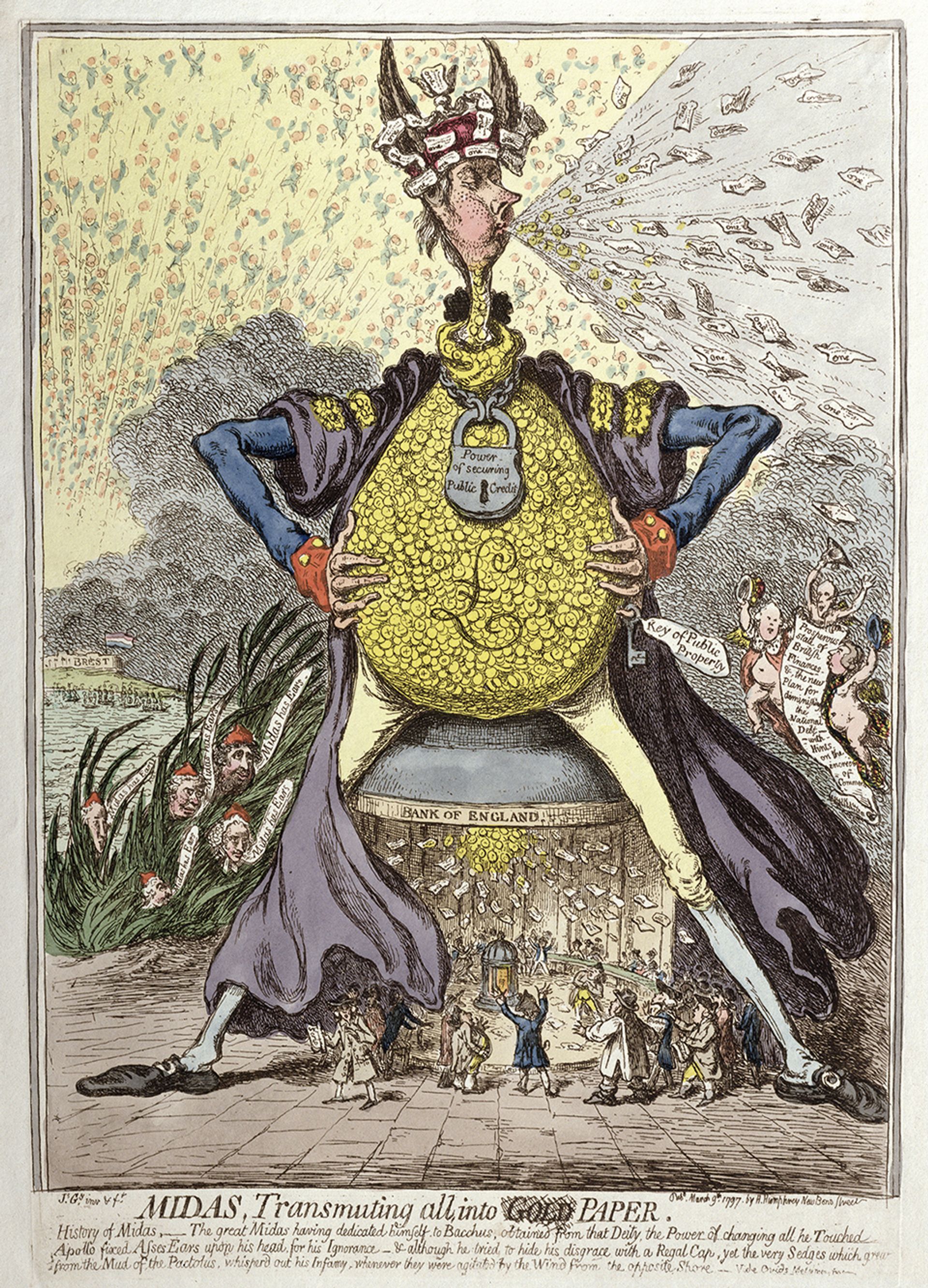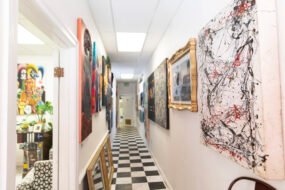
Of the various technologies to have emerged in recent years, blockchain, NFTs, smart contracts and generative AI are systematically changing the way art is certified, transacted, compensated and created. Not only have they helped to engineer an entirely separate, natively digital art world, they have also altered the central premise of art from an object to be displayed to a token to be transacted.
The legacy art world is still coming to terms with its digital Janus face: the NFT space, also known as “web3”. At a time when leading brands are seeking the stamp or “aura” of high culture, contemporary art seems to be merging with the luxury industry. Yet today’s brands are just as excited by household names such as Yayoi Kusama as they are by digital disruptors such as Sasha Stiles, mindful of new generations of consumers that are accustomed to buying digital things in the virtual worlds of the game platforms Roblox and Fortnite.
It doesn’t really matter how the work is displayed. The question is whether you have an easier connection to something on your wall or on your phone
Ganbrood, artist
Few people express the new identity of the digital artist more clearly than Ganbrood (Bas Uterwijk), a former reportage photographer and art director for Sony who has made a successful career as an artist working with machine learning. A prolific NFT collector in his own right, Ganbrood views the experience of art in the same liquid terms as the market: “The truth is, it doesn’t really matter how the work is displayed. The question is whether you have an easier connection to something on your wall or on your phone.”
Three years on from the NFT explosion of 2021, when Beeple’s Everydays: the First 5000 Days (2021) sold for $69.3m, only Pace Verso among the big galleries has made a concerted effort to engage “crypto-native” collectors through its NFT platform and partnership with the generative art marketplace Art Blocks. The rest of the world’s leading galleries seem to be in a state of digital denial. But as the net artist, indie game designer and digital sculptor Auriea Harvey points out: “Most sculptors today are using some kind of digital process, just as painters are preparing work with Photoshop. There’s no shame in any of this.”
According to Brian L. Frye, the Spears-Gilbert Professor of Law at the University of Kentucky College of Law, the same applies to collecting. “The conventional art market works the same way [as the NFT market],” he says. “Sure, if you buy a painting or sculpture, you get the painting or sculpture. But that’s irrelevant. The art market doesn’t value the object you own, it values what the object represents. What you are really buying is an entry on an artist’s catalogue raisonné.”
As a distributed ledger technology (DLT), the blockchain updates the traditional mode of certification for the age of digital art. It also challenges the hierarchy of different media by requiring that, regardless of what a work looks like, it must be certified by a token or else inscribed onto a cryptocurrency. For the artist Mitchell F. Chan, NFTs separate the artwork’s “artistic form” (the media) from its “commodity form” (the token), thereby turning art into a transparent form of art-money.

James Gillray‘s MIDAS; Transmuting all into [GOLD] PAPER (1797) is also part of the Ashmolean Museum exhibition Public domain, courtesy of Ashmolean Museum
This situation is not without historical precedent. Medieval Byzantium also witnessed the flourishing of a token economy that imprinted all forms of art with the healing power of the Holy Spirit. In that context, whether the work was made of paint, mosaic or metal did not matter. What mattered was that it had received the stamp of divine approval, for “incision was considered an act of consecration”. During the NFT boom of 2021, it was hard not to feel that the Holy Spirit had been replaced by hype as the animating force of the market. Back then, one downside often cited by artists was the lack of critical frameworks for evaluating art once it had been dropped into the OpenSea marketplace for NFTs. This was exacerbated by PFP (profile picture) projects like CryptoPunks (2017), whose hybrid nature—as both collectibles and code-based generative art— destabilised pre-existing categories of art.
Money talks
Today’s digital art world is different. Despite being desperately in need of liquidity, web3 has been fortified by new publications and platforms that seek to redefine the terms of the market by listening to the artists. Museums are also expanding the canon, making space for crypto, generative and AI art within new histories of analogue and digital media. Tate Modern’s forthcoming show Electric Dreams (28 November to 1 June 2025) seeks to examine the early innovators of “optical, kinetic, programmed and digital art” and their impact on the pre-internet imagination. Money Talks: Art, Society & Power at the Ashmolean Museum in Oxford (until 5 January 2025) addresses money as a medium of cultural representation whose value has always been, in some sense, imaginary.
Ranging from such parodies of commodity fetishism as Andy Warhol’s Dollar Sign (1981) to Meschac Gaba’s installation Bank or Economy: Inflation (2016), which reveals Western currency as a framework for imperial coercion, the Ashmolean show culminates in a section dedicated to “The Age of Digital Ownership”. Setting crypto art projects by Sarah Meyohas, Larva Labs and Rare Pepe Wallet alongside Joseph Beuys’s defaced banknotes (which he then returned to circulation) aligns two art worlds that have historically been segregated. It also supports the view of the sociologist Max Haiven, expressed in his prescient study Art After Money, Money After Art (2018), that “art is becoming more financialized and money is becoming more ‘cultural’”. For the Ashmolean exhibition I developed, with the literary artist Ana María Caballero, a site-specific edition of our project artifacts (2023-ongoing) in response to the Oxford Crown, minted by King Charles I during the English Civil War.
But it is not only on the border of finance that art’s expansion is evident. Originally commissioned by the Eden Project, Alexandra Daisy Ginsberg’s Pollinator Pathmaker (2021-ongoing) is an algorithmic tool to generate planting designs for “living artworks” that support the maximum number of pollinator species. Ginsberg offers audiences the means (and planting instructions) to empathise with natural ecosystems. But by interfacing art with computer science and ecology, she also reflects a wider move toward practices that cross-fertilise multiple disciplines with more-than-human perspectives.
Last year, the writer and critic Charlotte Kent suggested that some of the most interesting art right now looks more like speculative design. Ginsberg is not the only former student of Anthony Dunne and Fiona Raby, who established the discipline, to develop an art practice that might be described as transmedia. Marguerite Humeau, Xin Liu and Sputniko! (Hiromi Ozaki) all acknowledge the influence of Dunne and Raby on their work, whose strength derives in part from its confident marshalling of emerging technologies. Holly Herndon and Mat Dryhurst prefer the term “protocol art” to describe their practice, which uses AI as a “co-ordination technology”. For their forthcoming project, The Call, which opens at London’s Serpentine Galleries on 4 October, they collaborated with 15 ensembles around the UK to develop a choral dataset that explores the kind of collaborative process necessary to build AI systems defined by consent.
New artist-developed technologies
Artists are also sharing technologies they have developed themselves. In October, the Opéra de Paris will host Coddess Variations, a collaboration between the sculptor Hermine Bourdin, the dancer Eugénie Drion, the film director Hervé Martin Delpierre and the choreographer Ania Catherine of the artist duo Operator. The performance uses Operator’s generative choreography method, which both generates a sequence and allows the audience to collect choreography in the form of an NFT. For Catherine, “it is important to build cultural bridges between ephemeral art forms like dance and contemporary art. The idea that a dance can be collected might make people reconsider whether it deserves to be considered contemporary art and valued beyond entertainment and tradition”.
If co-creation reflects art’s increasingly networked character, it is also essential for curators in a context that the writer and curator Jesse Damiani has termed “Postreality”. For Damiani, “the curator’s first objective in Postreality is to engage critically with domains of knowledge beyond the arts … building trust networks that allow for omnidirectional knowledge sharing”. At a moment when its boundaries are being redrawn across new digital geographies, art has a role as a space for border thinking that may be its greatest asset.











